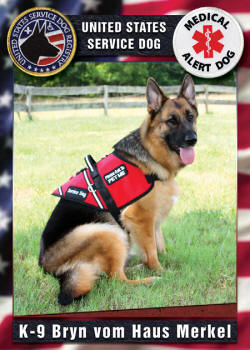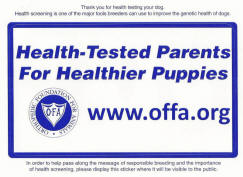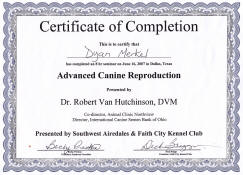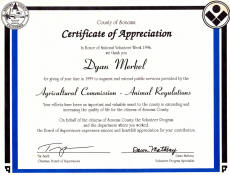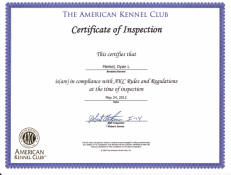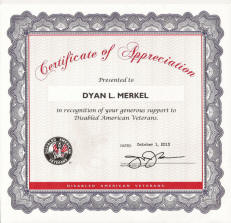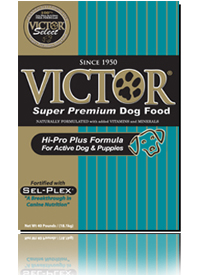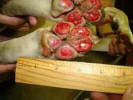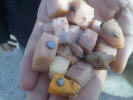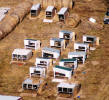|
RECOMMENDED VACCINATIONS
|
Disease |
1st Shot |
2nd Shot |
3rd Shot |
Revaccination Interval |
| Distemper
6 -10 weeks
10 - 12 weeks 14
-16 weeks
+/-1 yr. |
Infectious
Hepatitus
6 -10 weeks
10 - 12 weeks 14
-16 weeks
+/-1 yr. |
Parvovirus
infections
6 -10 weeks
10 - 12 weeks 14
-16 weeks
+/-1 yr. |
|
Bordetellosis 6 -10 weeks
10 - 12 weeks 14
-16 weeks
+/-1 yr. |
|
Parainfluenza
6 -10 weeks
10 - 12 weeks 14
-16 weeks
+/-1 yr. |
|
Leptospirosis 10 - 12 weeks
14 -16
weeks
+/-1 yr. |
| Rabies
12 weeks 64
weeks
1 or 3 yrs |
|
This is a basic program,
your veterinarian will tailor a vaccination schedule to suit
your
pet's needs for your location. |
|
|
The links below will
either take you to a section within this website or out to
the internet...if you find yourself out of this site just
use your back button to return to this section.
MEGA ESOPHAGUS
STAPHYLOCOCCAL
BACTERIAL PYODERMA
BACTERIAL
HYPERSENSITIVITY TO STAPH
CANINE SUPERFICIAL PYODERMA
PERINEAL HERNIAS
PARVOVIRUS and CORONAVIRUS
reprinted from Foster and Smith
These two
viral diseases didn't show up on the United States until the
late 70's. Every dog in the country, no matter where
you live, should be vaccinated for both of theses
diseases. There is not excuse for doing otherwise and
it doesn't make a difference if they never leave your house.
These two infections affect dogs of all ages. But they
are particularly devastating to puppies. The viruses
persist in the kennel area, soil or anywhere else for a
least 6 months and probably for 2-3 years. You can
easily track the organisms home on your shoes or equipment.
The only reasons that we have not lost more animals to these
diseases is that excellent vaccines are now readily
available. See your Veterinarian and get your pet
vaccinated routinely.
BLOAT (GASTRIC TORSION)Bloat
(otherwise known as "gastric torsion") can be a problem
with any deep-chested breed like German Shepherds. The
stomach twists so nothing can pass through the esophagus
to the stomach or through the stomach to the intestines,
causing gas to build up. This is an immediate
health concern where the dog should be taken to the vet or
emergency clinic. Signs of bloat include a distended
rigid abdomen, indications of vomiting with no results
and inability to belch or pass gas.
High activity directly before or after
eating can exacerbate bloating. Keeping the dog quiet at
least one hour before and after eating can help reduce
the chances of bloat. Pre-moistening the dog's food with
water can also reduce the chances, however, without the
teeth-cleaning help of crunching food, you will want to
take especially good care of your dog's teeth by weekly
tooth-brushing and hard biscuits to help remove tartar.
(Be sure to include any treats you give in the balance
of food intake. Too many treats may cause your dog to
gain weight, and treats only may not give the dog the
nutrition it needs.) Smaller meals can also reduce the
risk of bloat if you do not free-feed. (Free-fed dogs
just need to have their activity level watched, but do
not usually eat enough at any one sitting to cause
problems. Bloat is more of a problem with a dog that
"gulps" its food which a free-fed dog won't usually do.
Don't leave pre-moistened food down for a free-fed dog
too long as it can breed bacteria. Instead, leave them
smaller portions, but refill more frequently.)
LYME DISEASE
Every Dog is at Risk
Lyme Disease
is caused by the bacterial organism Borrelia Burgorferi.
This bacteria can be transmitted to dogs, cats, humans, etc.
by fleas, flies, deer tick, wood ticks, and many other
insects. Even direct transfer from dog to dog is
possible. Because insects and ticks are found
virtually everywhere and since people travel to all
areas with their pets, every dog is at risk.
Lyme Disease
usually appears as a leg lameness, but can cause paralysis,
seizures, fever and death.
The final
diagnosis of Lyme Disease can only be accomplished by a
blood test performed by a Veterinarian and analyzed by
a professional health lab. Fortunately there is a
vaccine. Vaccinate every dog on a regular, yearly
basis. This debilitating disease is much better
prevented than treated.
HEARTWORMS
Heartworm
Disease (caused by Dirofilaria immitis) is found in
practically every area of the lower 48 states. It is
transmitted from infected dogs to noninfected ones by
mosquitoes.
Once injected
into the dog, over a period of 6 month the immature
heartworms slowly migrate to the heart, enter the blood
vessels and become adults. The mature worms then
produce juveniles know as microfilaria. These
microfilaria circulate throughout the bloodstream and are
picked up by mosquitoes to infect another dog.
The adults
that live in the heart and blood vessels of the lungs can
survive for years and cause sever damage to the heart and
pulmonary tissues. If untreated, they ususally kill
the canine patient.
Treatment of
the disease can be costly and difficult. It is
therefore best to prevent the disease through the use of one
of several products.
Medication
should be started one month prior to mosquito season and
continued for 60 days after the mosquito season. In
the southern U.S., heartworm prevention may be given the
entire year. See your veterinarian for a Heartworm
Check and Preventative Medicine.
GIARDIA
What is
Giardia? Giardia is a microscopic parasite that lives
in the intestines of many domestic and wild animals.
The parasite is shed in the feces and can survive in moist
areas, particularly stagnant water and animal waste.
If people or animals ingest contaminated water or food, or
touch and accidentally ingest infected animal waste, they
may develop a serious intestinal infection. Your
Pets can also get infected from their paws after walking in
contaminated areas or from direct contact with infected
animals.
What to watch
for: Giardia attaches to the intestinal lining,
damaging the tissue and interfering with the host's ability
to absorb nutrients. If your pet is infected, it may
exhibit one or more of the following signs:
-
diarrhea
-
depression
-
weight loss
-
decreased
appetite
-
vomiting
If Giardia
parasites remain in the host for a long time, they erode the
intestinal lining and cause sporadic bloody diarrhea.
Left untreated, your pet may become increasingly debilitated
and susceptible to other infections.
Giardia symptons are very similiar to PARVO so make sure you
take your dogs and a stool sample to your veterinarian
immediately. Giardia is easily treated with Flagell.
What you can
do:
-
Keep pet
from drinking from streams, lakes, mud puddles or run
off water.
-
Dilute
bleach in water (4 oz. per gallon of qater) and apply
the solution to runs, kennels, and food bowls and rinse
thoroughly. Clorox can harm animals if it contacts
the skin or is ingested.
-
Keep the
yard clean of feces and avoid dog parks or other heavily
traveled dog areas.
TAPEWORMS
Tapeworms are
common intestinal parasites in pets. The most common
tapeworm is transmitted through fleas.
HOW DO DOGS
GET TAPEWORMS
Your dog
becomes infested with tapeworms by eating fleas, or rabbits,
mice, rats and other animals that carry tapeworm larvae.
Adult tapeworms live in your dogs intestine and release
segments filled with eggs through the stool.
Tapeworm eggs
are often consumed by fleas, making them carriers. An
infection occurs when your dog eats the infected fleas.
The tapeworm larvae develop into adults in your dogs
intestine and shed more egg segments.
SIGNS OF
TAPEWORMS
Tapeworms
irritate you pet's intestine and reduce food absorption.
They can be passed on the humans (by accidentally eating as
infected flea), but they don't pose a significant human
threat.
HOW TO
PREVENT TAPEWORMS
To minimize
tapeworm infections:
-
If your dog
is exposed to fleas or if it hunts outside, regularly
look for tapeworm segments in your dog's stool. In
a fresh stool these segments may be alive and moving.
I older stools they look like grains of rece.
If your dog has fleas, he probably has tapeworm, even
though you haven't seen any segments in his stool.
-
Begin a
flea-contol program to prevent flea-carried tapeworm
infections. Follow a total flea control program,
including pet spray, dips, and shampoos.
Treat the indoors and the outdoors with flea products,
and be consistent, repeating many times, some times
throughout the entire flea season.
-
Unfortunately, no tapeworm preventatives are available.
See your veterinarian about regular treatment of your
pet if you live in a flea problem area. Put
your pet on a once a month flea preventative program
such as Revolution, Frontline etc.
COCCIDIA
HOW DO DOGS
GET COCCIDIA
Adult
coccidia in an infected dog will pass tiny egg-like
organisms called "oocysts" through the dogs stool.
These oocysts are accidentally eaten by you dog. The
oocysts break open in the intestine and release new
organisms that move to the intestinal wall. There
these new organisms multiply rappidly and become either new
oocysts to be passed out again with the stool or they return
to another cell and multiply. Your infected dog is
both increasing the number of internal coccidia organisms
and contaminating the environment at the same time.
SIGNS OF
COCCIDIA INFECTION
-
When they
produce, coccidia destroy you dog's intestinal cells.
Some can move to the liver and brain and destroy cells
there.
-
Signs
include bloody diarrhea, abdominal pain, listlessness,
dehydration and weight loss. Some dogs show no
outward signs of infection . As with all
intestinal worm infections, puppies are most at risk.
HOW TO
PREVENT COCCIDIA
To minimize
the risk of coccidia infections clean up stools. Your
veterinarian can prescribe medicines that can kill coccidia.
Avoid public parks where others may allow their dogs to
deficate. Keep your puppy away from other puppies
until he is old enough to not succumb to coccidia.
Generally puppies around 5 or 6 months seem to be able to
stay free of it.
HOOKWORMS
Hookworms are
tiny, threadlike parasites that affect puppies and adult
dogs. They are a particular problem in areas with
warm, moist, sandy soil.
HOW DOGS GET
HOOKWORMS
The cycle
begins when hookworm eggs are passed in dog stools to the
soil. Your dog can swallow the young hookworms or they
can penetrate its skin, usually through the foot. Like
roundworms, hookworms are also passed from female dogs to
their puppies. Hookworms present a slight risk to
humans if larvae (young hookworms) in the soil contact skin.
Painful skin sores can result.
SIGNS OF
HOOKWORM INFECTION
Hookworms
feed on blood and tissue by piercing your dogs' intestinal
lining with tooth-like hooks. As a result, hookworms
can cause severe blood loss. As few a 100 hookworms
can kill a puppy. Dogs with heavy infections often
have bloody diarrhea. Other signs include anemia,
dehydration and apparent wekness. Some puppies show no
outward signs of infection.
HOW TO
PREVENT HOOKWORMS
To reduce the
risk of hookworms:
-
Take
puppies to your veterinarian at an early age.
Follow your veterinarian's advice on medicine and
follow-up visits.
-
Ask about
products which help prevent hookworms.
-
Provide
your veterinarian with your dog's stool sample at least
once a year.
-
Don't feed
your pet on the ground. Use only clean food and
water dishes. To kill hookworms in your your, use
sodium borate (10 punds per 100 square feet)
-
Clean up
dogs stools before they can break down in the soil.
-
Wash hands
before eating. This is especially important for
children.
WHIPWORMS
Dogs confined
to smal, outside areas are at highest risk of having
whipworms.
HOW DO DOGS
GET WHIPWORMS:
Whipworm
infection occurs when your dog swallows whipworm eggs.
After hatching in the small intestine, whipworm larvae move
to the large intestine where they mature. Here, adult
worms lay eggs which are passed in your dog's stool to
contaminate the soil.
SIGN OF
WHIPWORM INFECTION:
Light
infections of whipworms are difficult to diagnose, but they
can lead to more serious problems. Large numbers of
whipworms irritate the lining of your dog's intestine,
causing weight loss and pain. Watery, bloody stools
may result. Severe infections can cause
life-threatening ehydration and anemia. Whipworms are
not dangerous to people. But once dogs become infected
whipworms are difficult to elimiante without medication
programs.
HOW TO
PREVENT WHIPWORMS
To protect
your pet from whipworms after your veterinarian's treatment:
-
If your dog
returns to the same infected ground, treatments will be
required every three months. A new site is
preferred.
-
If you pet
lives in a pen with a washable surface, sanitize the
area before returning your dog to its quarters.
-
Don't feed
your dog on the ground. Feed and water only in
clean dishes.
-
Ask your
veterinarian for medicines that remove and control
whipworms. A daily preventive program should be
started - both through medication and daily cleanup of
dog stools.
ROUND WORMS
A large
percentage of puppies are born with microscopically small
roundworm larvae in their tissues. The larvae got
there via migration through the mother's tissues right into
the developing pup or kitten in the mother's uterus!
The worm larvae can also be transferred to the nursing pup
from the mother's milk. The larvae make their way to the
intestinal tract where they can grow up to five inches in
length. They start shedding eggs and try desperately
to keep house in the small intestine of the pup. The
eggs that the adult worms pass in the stool can now reinfest
the same pup or other dogs and cats if somehow the
egg-bearing stool is eaten. When the worm eggs hatch,
larvae are released internally to migrate to the
animal's lungs where the larvae (remember, the larvae are
microscopic in size) are finally coughed up, swallowed, and
finally grow up to adults in the small intestine.
So you can see that repeated exposures to egg-bearing stool
or stool-contaminated soil can cause additive numbers of
parasites to a dog load.
HOW TO PREVENT ROUNDWORM INFESTATION:
-
Clean up
dogs stools before they can break down in the soil.
-
Don't feed
your dog on the ground. Feed and water only in
clean dishes.
-
Ask your
veterinarian for medicines that remove and control
whipworms. A daily preventive program should be
started - both through medication and daily cleanup of
dog stools.
-
Don't take
your dog to dogs parks or other areas where dogs stools
might be infected.
FLEA CONTROL
Fleas are
small, brown or black, wingless insects with flattened
bodies. Several types of fleas infest the aircoats of
animals, and some may occasionally fee on people.
THese blood-sucking insects cause considerable irritation
and distress to infested pets. Severe infectations may
lead toa anemia from blood loss. Fleas spread the
common dog and cat tapeworm, and carry several viral and
bacterial diseases. Flea bites also cause skin
allergies, rashes and sores on both pets and their owners.
The best
places to look for fleas on your pet are the hindquarters,
base of the tail, stomach and groin regions. Sometimes
no fleas are found but only tiny, black granules that
resemble black pepper. This material is flea feces and
consists o digested blood ("blood crumbs"). To
distinguish this material from dirt, smudge it on white
paper or add a drop of water to it. If you see a
reddish-brown color, your pet has fleas, even if you can
find none.
LIFE CYCLE
After taking
a blood meal, fleas drop off the animal and deposit their
eggs in cracks, crevices and capeting. A single
breeding pair of fleas may produce 20,000 fleas in 3 months.
Eggs hatch after 2-12 days into larvae that feed in the
environment. Larvae molt 2 times within 2-200 days and
the older larvae spiin a cocoon in which they remain for 1
week to 1 year. The long peropd during which the
larvae remain in the cocoon explains why fleas are difficult
to eradicate from the environment. A hungry adutl flea
emerges from the cocoon.
lebron 12 louis vuitton outlet louis vuitton outlet jordan 6 sport blue lebron 12 coach outlet online wolf grey 3s wolf grey 3s michael kors outlet lebron 12 foamposites for sale Sport blue 14s jordan 6 sport blue louis vuitton outlet legend blue 11s louis vuitton outlet Cheap louis vuitton louis vuitton outlet sport blue 3s Sport Blue 6s | 
